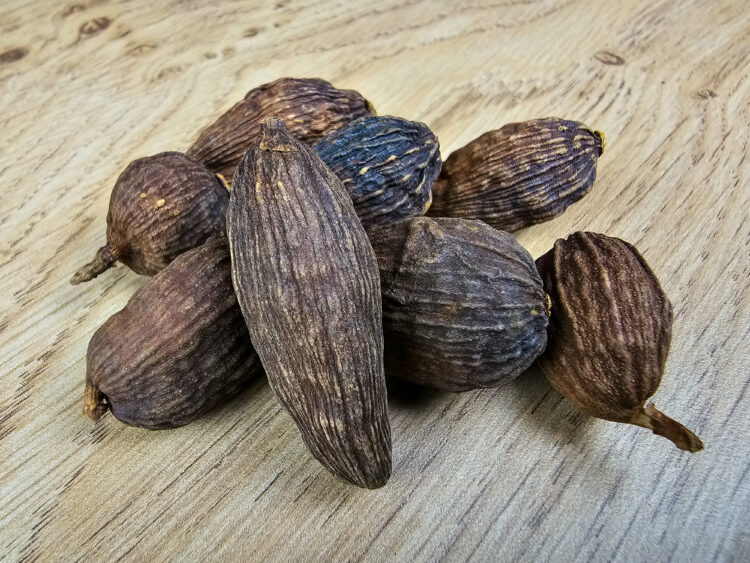What Is Black Cardamom?
Chinese black cardamom, amomum tsao-ko, is a spice commonly used in Asian cuisine. It is also called tsao-ko or cǎoguǒ in Chinese and thao qua in Vietnamese.
It is the fruit of an herbaceous plant from the Zingiberaceae family (ginger) with red stems and long, pointed leaves.
There are several subspecies, but generally the pods, measuring about 3 centimeters, are hard, wrinkled, dark brown or black and contain about 40 small round brown seeds. This plant originates from the Morimg Hills in Bengal and grows mainly in the Himalayan mountains, particularly in India, Nepal, and Bhutan.
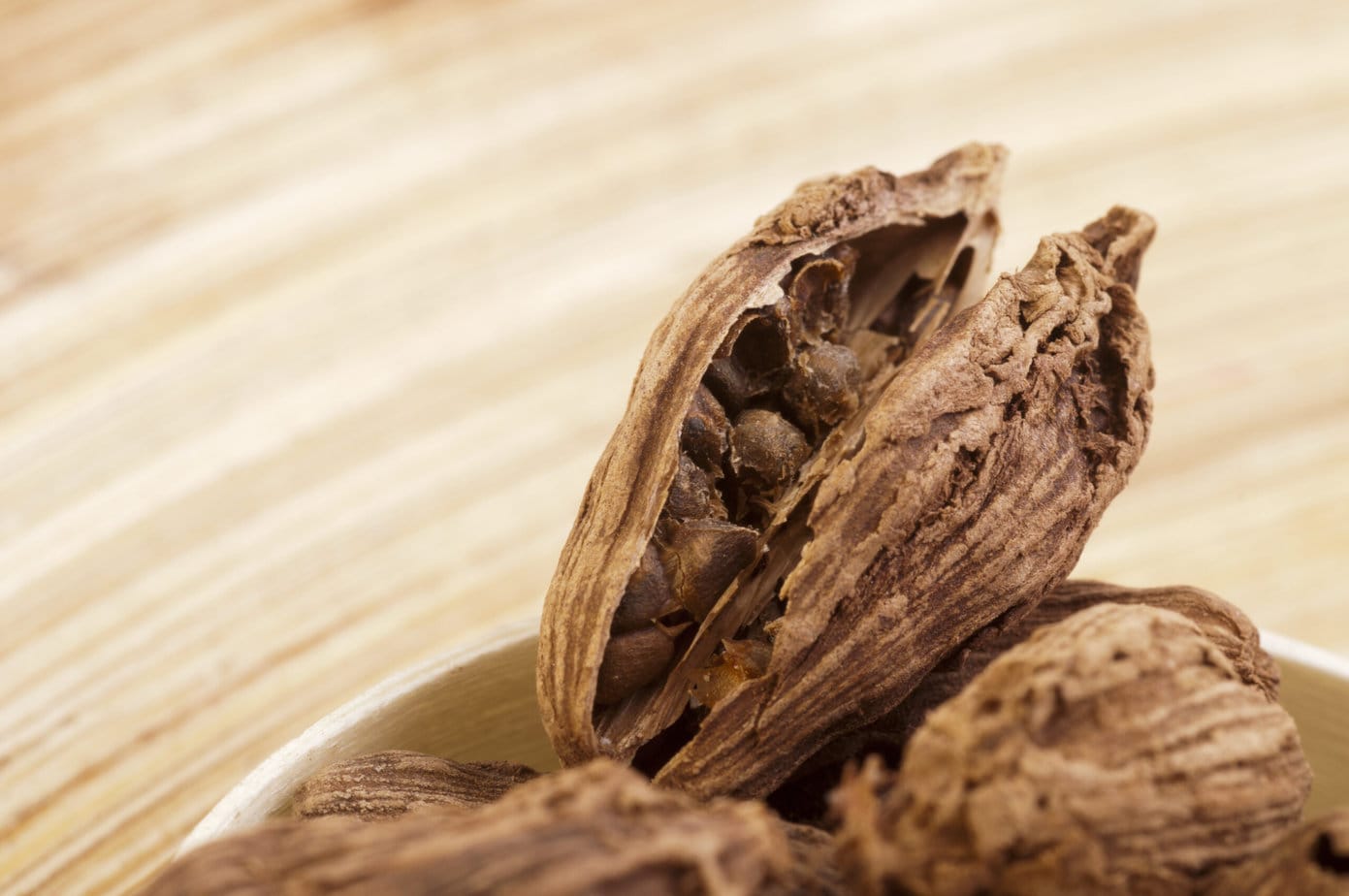
The tsao-ko is larger than the black cardamom from these three countries and is more common in the Sino-Vietnamese border area as well as in northern Thailand and Laos.
What Does Black Cardamom Taste Like?
Once dried over an open fire, black cardamom pods have a strong smoky and woody aroma reminiscent of citrus and eucalyptus.
The seeds are also fragrant, slightly sweet. They have resin and camphor flavors as well as refreshing minty notes, which help to balance the spice’s aroma.
Black Cardamom in Cooking
Also known as “the queen of spices”, tsao-ko is one of the most important spices in Asian cuisine, particularly in Chinese cuisine and Vietnamese cuisine. It’s a perfect addition to savory recipes, especially soups, braised meats, and stir-fries.
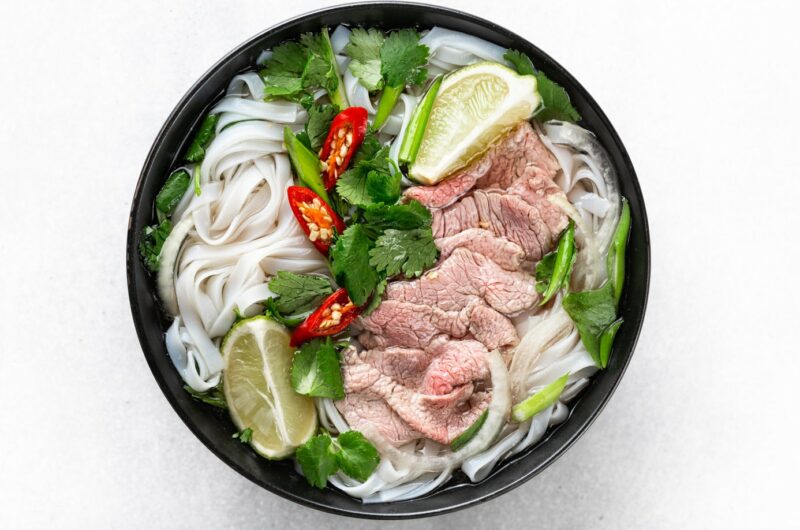
For example, in China, there’s Lanzhou beef noodle soup, braised beef noodle soup, and Chinese spicy braised beef.
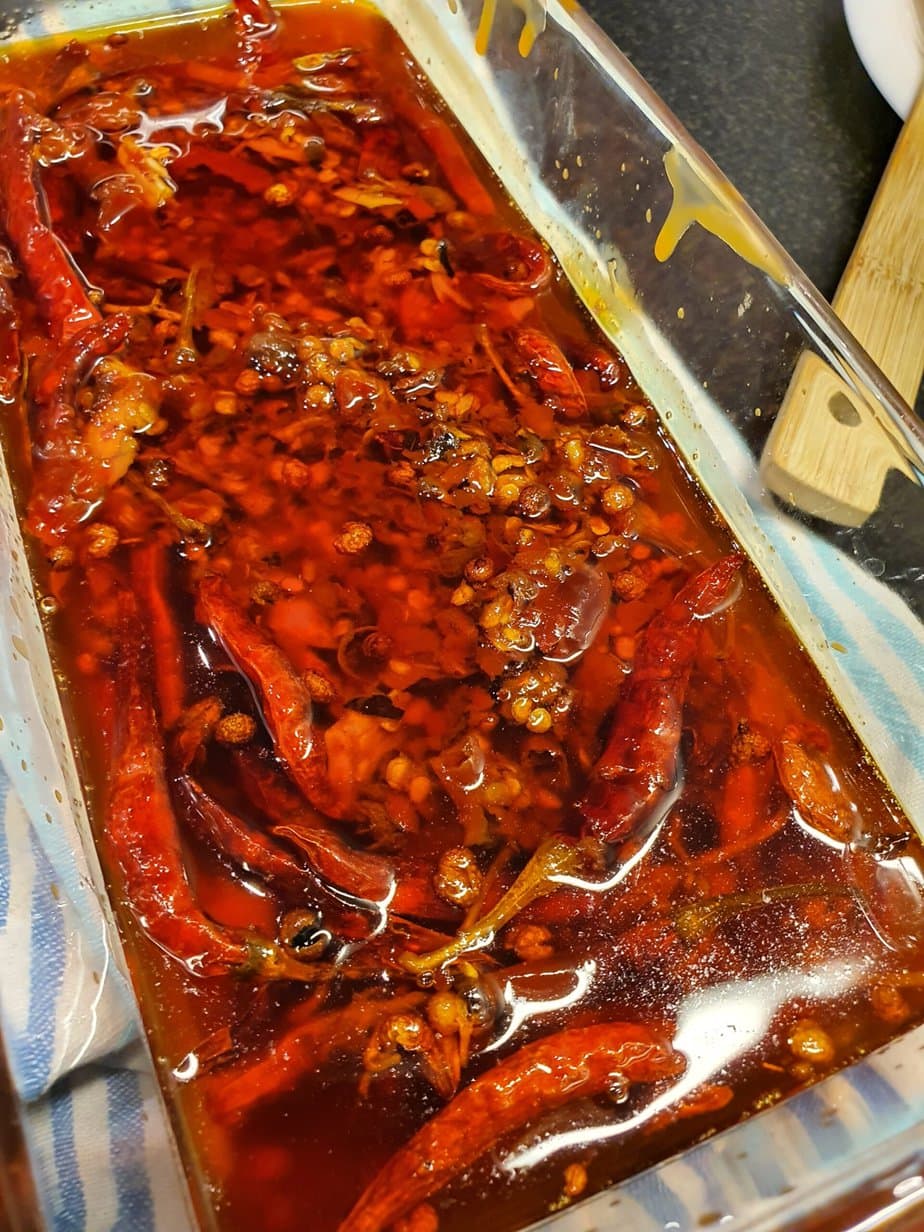
In Vietnam, black cardamom is essential in the traditional noodle soup pho. In Laos and Northern Thailand, it’s added to the curry noodle soup khao soi or khao soy.
Be careful, whole pods are preferable. You should only use one or two for a recipe because the flavor of black cardamom can easily overpower “other ingredients in the dish. Less is more in this case.”
What Are the Benefits of Black Cardamom?
Black cardamom is a medicinal spice. In traditional Chinese and Vietnamese medicine, it is considered a valuable remedy for respiratory and digestive problems due to its “warmth”.
In modern medicine, the essential oil from its seeds is used to treat infections caused by certain fungi. Black cardamom is also effective for protecting teeth, heart, and liver.
Black Cardamom vs. Green Cardamom
It’s not difficult to distinguish black cardamom from green cardamom as these two spices come from different plants. You can recognize the differences according to the following criteria:
Distribution and appearance: While black cardamom is rather black or dark brown, green cardamom or elettaria cardamomum, as its name suggests, has green or yellow fruits. It is smaller than black cardamom: its pods measure only between 1 and 2 centimeters and contain about 20 seeds. It originates from India and Southeast Asia and is used in Asian, Arab, and Scandinavian cuisine.
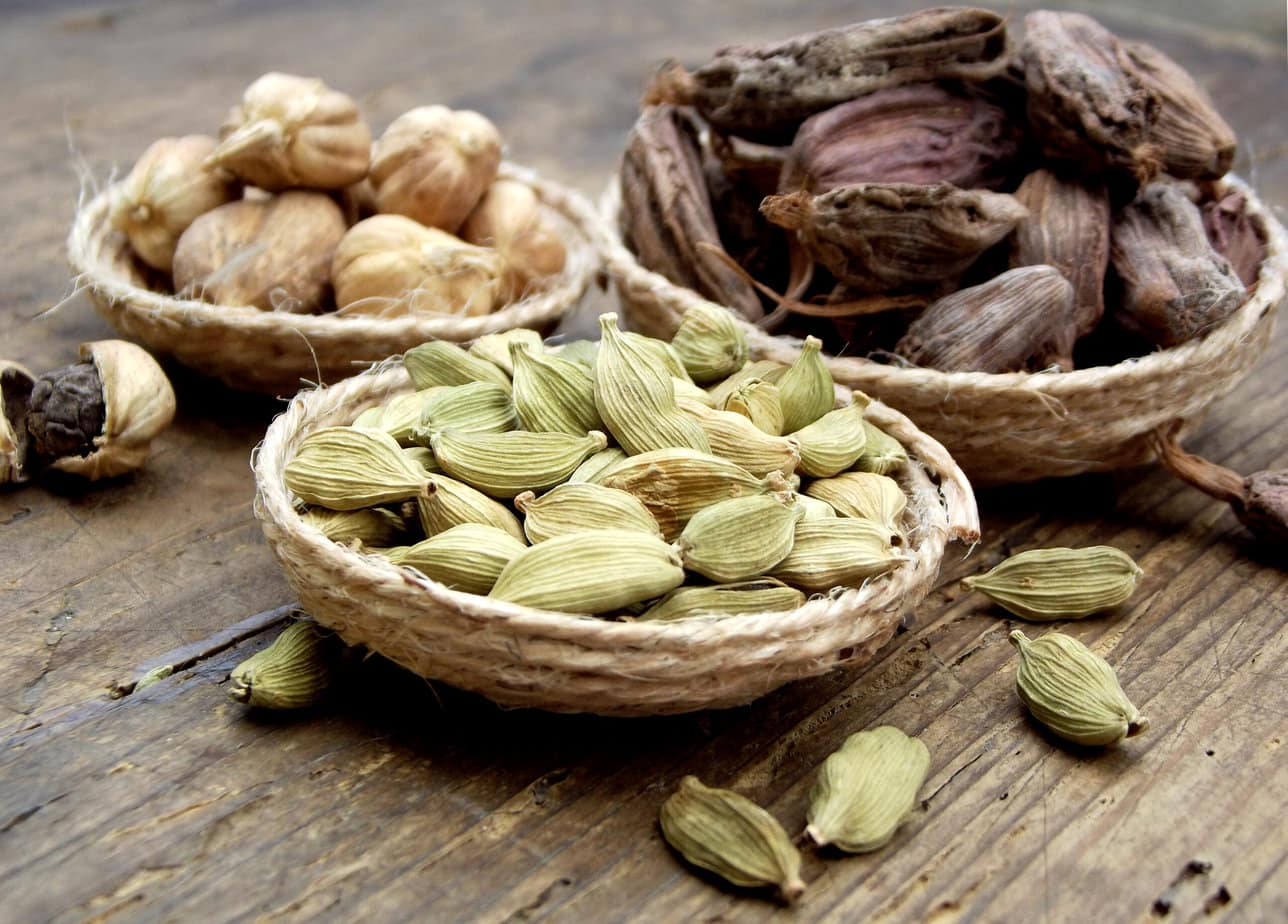
Production process: While green cardamom is harvested before the fruits mature, black cardamom is harvested later. The latter must also be dried over fire before use to awaken its smoky and woody flavor.
Taste and Usage: Both spices enhance the flavor of dishes. However, green cardamom, with its milder, subtle, and delicate taste, is suitable for both savory and sweet recipes.
As for black cardamom, due to its smoky and menthol-like aroma, it is rarely used in sweet dishes. The two cannot be substituted for each other as they have completely different flavors. The smoky taste of black cardamom risks overpowering dishes that require green cardamom. Conversely, green cardamom is unable to season dishes that demand the specific flavor of black cardamom.
Where to Buy Black Cardamom?
It is advisable to use whole pods rather than seeds or powder because once the skin of the fruit is peeled, the specific aroma of cardamom will gradually disappear.
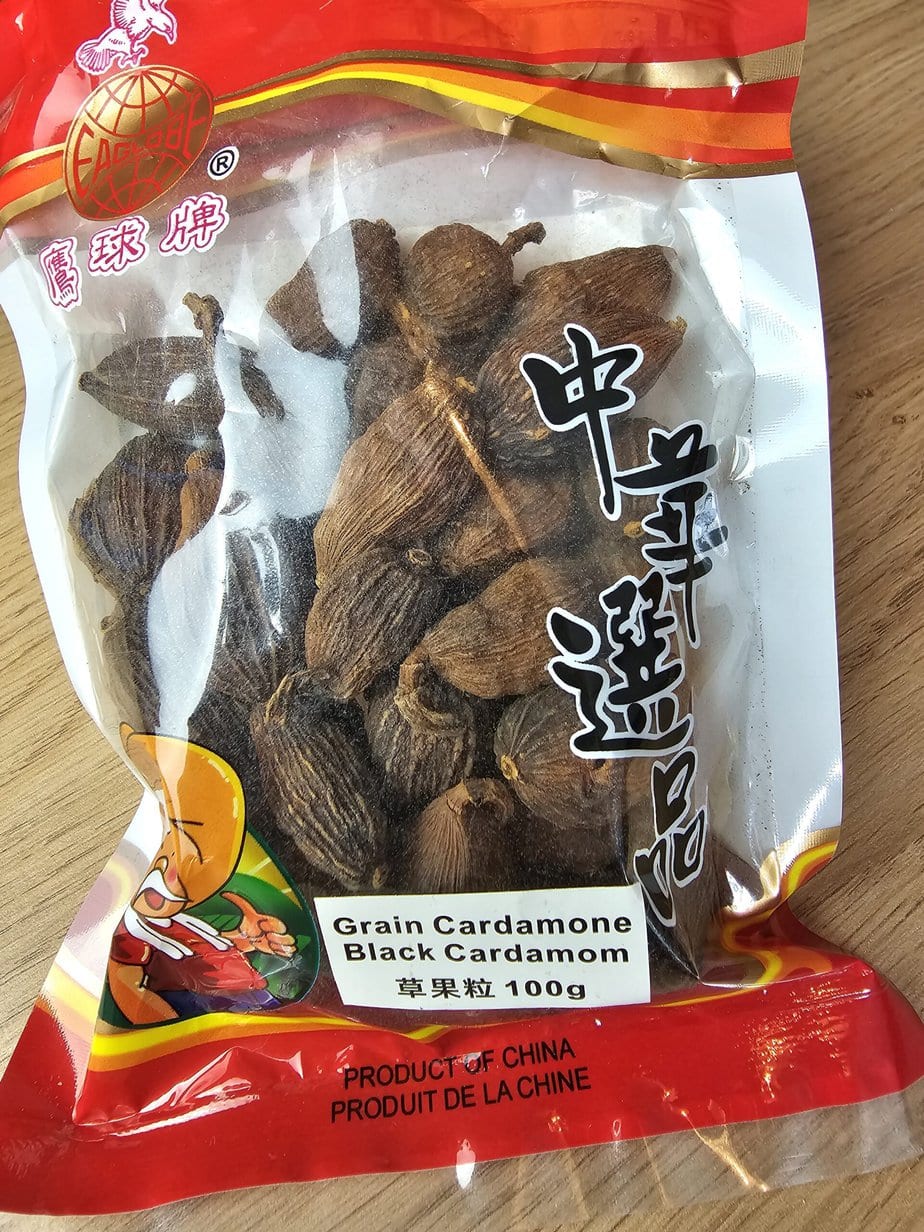
Therefore, try to buy whole black cardamom if it is available near you. They are often sold in Asian supermarkets, gourmet markets, or well-stocked grocery stores. However, it is more difficult to find them in regular supermarkets.
How to Store Black Cardamom?
Like other spices, black cardamom should be stored in tightly sealed containers away from light and heat. Whole pods easily retain their flavors for 1 year, while in powder form, it will last a few months at most.
